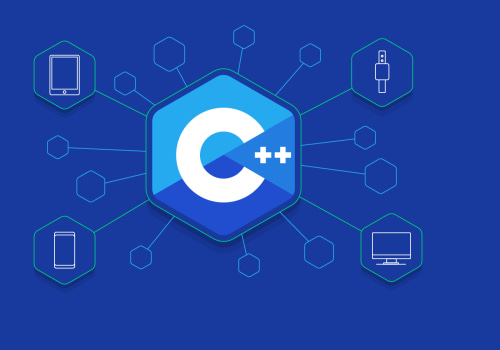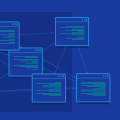Arrays are one of the most fundamental and essential data structures used in programming, including the popular stacks, queues, and linked lists data structure. They are used to store, organize and manipulate data in an efficient manner. Arrays are versatile, and can be used for a variety of purposes such as sorting, searching, and even creating graphs. Understanding the basics of arrays is crucial for any programmer, as they are often used in coding projects involving queues data structure.In this article, you will learn how to use arrays, including the stacks data structure, in your programs and how to create them from scratch. We will also discuss some of the common operations performed on arrays and how to optimize them for maximum performance. By the end of this article, you will have a better understanding of how to use arrays, and how to take advantage of their power and flexibility. Arrays are one of the most fundamental and essential data structures used in programming, including the popular stacks, queues, and linked lists data structure. They are used to store, organize and manipulate data in an efficient manner. Arrays are versatile, and can be used for a variety of purposes such as sorting, searching, and even creating graphs. Understanding the basics of arrays is crucial for any programmer, as they are often used in coding projects involving queues data structure. In this article, you will learn how to use arrays, including the stacks data structure, in your programs and how to create them from scratch. We will also discuss some of the common operations performed on arrays and how to optimize them for maximum performance. By the end of this article, you will have a better understanding of how to use arrays, and how to take advantage of their power and flexibility.. They are used to store, organize and manipulate data in an efficient manner. Arrays are versatile, and can be used for a variety of purposes such as sorting, searching, and even creating graphs. Understanding the basics of arrays is crucial for any programmer, as they are often used in coding projects involving queues data structure. In this article, you will learn how to use arrays, including the stacks data structure, in your programs and how to create them from scratch. We will also discuss some of the common operations performed on arrays and how to optimize them for maximum performance. By the end of this article, you will have a better understanding of how to use arrays, and how to take advantage of their power and flexibility. Arrays are one of the most fundamental and essential data structures used in programming, including the popular stacks, queues, and linked lists data structure. They are used to store, organize and manipulate data in an efficient manner. Arrays are versatile, and can be used for a variety of purposes such as sorting, searching, and even creating graphs. Understanding the basics of arrays is crucial for any programmer, as they are often used in coding projects involving queues data structure. In this article, you will learn how to use arrays, including the stacks data structure, in your programs and how to create them from scratch. We will also discuss some of the common operations performed on arrays and how to optimize them for maximum performance. By the end of this article, you will have a better understanding of how to use arrays, and how to take advantage of their power and flexibility..In this article, you will learn how to use arrays, including the stacks data structure, in your programs and how to create them from scratch. We will also discuss some of the common operations performed on arrays and how to optimize them for maximum performance. By the end of this article, you will have a better understanding of how to use arrays, and how to take advantage of their power and flexibility. Arrays are one of the most fundamental and essential data structures used in programming, including the popular stacks, queues, and linked lists data structure. They are used to store, organize and manipulate data in an efficient manner. Arrays are versatile, and can be used for a variety of purposes such as sorting, searching, and even creating graphs. Understanding the basics of arrays is crucial for any programmer, as they are often used in coding projects involving queues data structure. In this article, you will learn how to use arrays, including the stacks data structure, in your programs and how to create them from scratch. We will also discuss some of the common operations performed on arrays and how to optimize them for maximum performance. By the end of this article, you will have a better understanding of how to use arrays, and how to take advantage of their power and flexibility.. They are used to store, organize and manipulate data in an efficient manner. Arrays are versatile, and can be used for a variety of purposes such as sorting, searching, and even creating graphs. Understanding the basics of arrays is crucial for any programmer, as they are often used in coding projects involving queues data structure. In this article, you will learn how to use arrays, including the stacks data structure, in your programs and how to create them from scratch. We will also discuss some of the common operations performed on arrays and how to optimize them for maximum performance. By the end of this article, you will have a better understanding of how to use arrays, and how to take advantage of their power and flexibility. Arrays are one of the most fundamental and essential data structures used in programming, including the popular stacks, queues, and linked lists data structure. They are used to store, organize and manipulate data in an efficient manner. Arrays are versatile, and can be used for a variety of purposes such as sorting, searching, and even creating graphs. Understanding the basics of arrays is crucial for any programmer, as they are often used in coding projects involving queues data structure. In this article, you will learn how to use arrays, including the stacks data structure, in your programs and how to create them from scratch. We will also discuss some of the common operations performed on arrays and how to optimize them for maximum performance. By the end of this article, you will have a better understanding of how to use arrays, and how to take advantage of their power and flexibility.
Conclusion
In conclusion, Arrays are an important data structure that can be used for a variety of tasks.They provide quick access to individual elements and allow for efficient manipulation of data. Arrays can be used for storing large amounts of data or searching for specific elements.
Understanding how Arrays work is essential
for any programmer.Advantages of Arrays
Arrays offer a number of advantages over other data structures. One of the most notable benefits is their ability to provide quick access to individual elements.This makes them ideal for applications that require frequent lookups, such as databases and search algorithms. Additionally, arrays can easily be resized, allowing for efficient manipulation of data, such as sorting or searching. Finally, arrays are relatively simple to use and understand. In conclusion, arrays offer several advantages that make them an excellent choice for many applications. They provide quick access to individual elements, allow for efficient manipulation of data, and are relatively simple to use and understand.
As a result, they are a popular choice for organizing and manipulating data in a wide range of applications.
Uses of Arrays
Arrays are a popular data structure used in coding for a variety of tasks. They are ideal for storing large amounts of data that needs to be accessed quickly, such as databases or images. Arrays can also be used for sorting data or searching for specific elements. Additionally, they are often utilized in algorithms for tasks such as sorting or searching. The use of arrays can be seen in a wide range of applications, from games to databases.For example, many popular video games use arrays to store characters and items, as well as objects in the game world. Similarly, databases often use arrays to store records and information. Arrays can also be used to help with sorting data and searching for specific elements, which is often done in algorithms. In summary, arrays are an important data structure used in coding. They provide an efficient way to store and access large amounts of data, and can be used for sorting, searching, and algorithms.
Arrays are commonly found in applications ranging from video games to databases. Arrays are an invaluable tool for any programmer, providing quick access to individual elements and efficient manipulation of data. By understanding the basic principles behind arrays, developers can use them to create powerful applications. Whether it is sorting large sets of data, quickly accessing data in a database, or even just creating a simple list of items, arrays provide an effective way to store and manage information. Arrays are a key part of data structures, and learning the basics of how they work is an important step in becoming a successful programmer.











